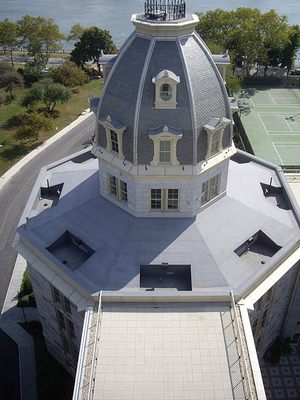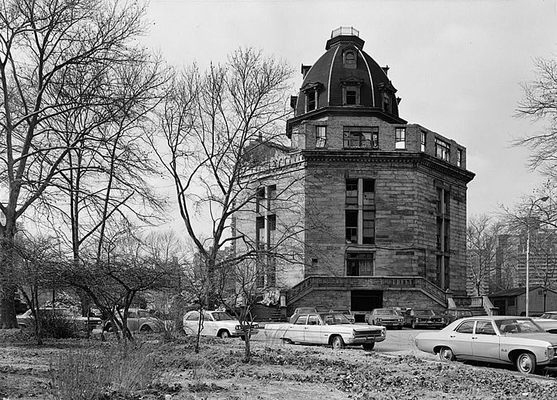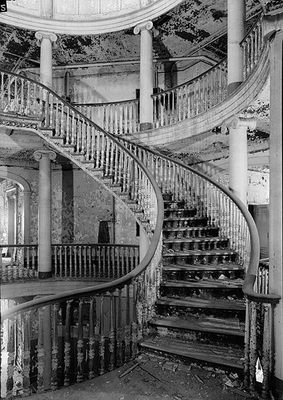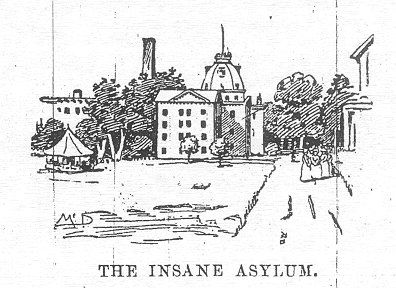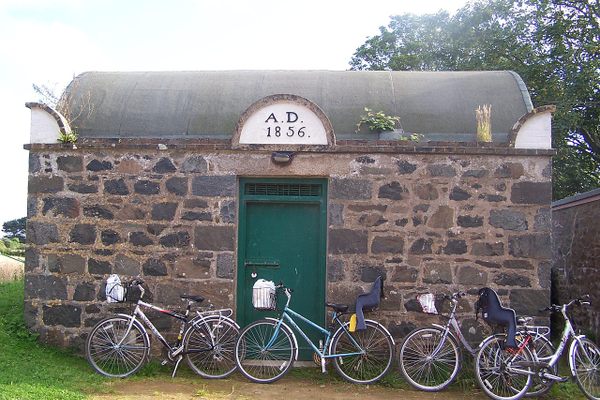About
"Everything had a lounging, listless, madhouse air, which was very painful. The moping idiot, cowering down with long disheveled hair; the gibbering maniac, with his hideous laugh and pointed finger; the vacant eye, the fierce wild face, the gloomy picking of the hands and lips, and munching of the nails: there they were all, without disguise, in naked ugliness and horror.''
-Charles Dickens, 1842
Built in 1834, the new insane asylum on Blackwell's Island, today known as Roosevelt Island, was designed to be a new model for mental health, located on the island countryside outside of the bustle of the big city. But almost from the beginning the asylum became known for its underfunding and overcrowding, for the staff's neglect and the inmates' desperately abysmal living conditions. Patients dropped dead from outbreaks of typhus and cholera, and even the easily preventable scourge of scurvy took its toll on the malnourished inmates. Conditions continued to decline long after Dickens's visit.
In September of 1887, a young reporter for the New York World concocted an elaborate ruse to get herself committed to the asylum in order to report on the conditions from within. "Ten Days in a Mad House" went on to be Nellie Bly's breakthrough piece of journalism, not only proving her mettle as a truly extraordinary young journalist but also bringing much-needed attention to the dismal conditions within the city's mental health system.
In part, she wrote, "What, excepting torture, would produce insanity quicker than this treatment? Here is a class of women sent to be cured. I would like the expert physicians who are condemning me for my action, which has proven their ability, to take a perfectly sane and healthy woman, shut her up and make her sit from 6 a.m. until 8 p.m. on straight-back benches, do not allow her to talk or move during these hours, give her no reading and let her know nothing of the world or its doings, give her bad food and harsh treatment, and see how long it will take to make her insane. Two months would make her a mental and physical wreck."
At least in part as a result of her exposé, the institute was given nearly a million dollars in additional funding to improve the facilities and care on Blackwell's.
The architecture, on the other hand, was gorgeous. Dickens, despite his above comments, was actually charmed by the building itself, calling it "spacious and elegant." The building was designed by noted New York architect Alexander Jackson Davis, and its distinctive blue-grey stone was quarried on the island. The building's beautiful spiral stairway and domed cap were added in 1878.
After the asylum's tenants were relocated at the end of the century to nearby Ward's Island, the building was renamed Metropolitan Hospital and remained in use as a general-purpose health care center until the 1950s. Since then, various plans for the historic building were proposed but never enacted, and it slowly began to crumble. By the early 2000s, after nearly a century of neglect, the building was a ruin: an empty shell, a victim of neglect and fire, with a collapsed ceiling and nearing the point of no return.
In 2006, the property was purchased and the building converted into a residential complex. The trademark octagon tower is the only part of the original building remaining, preserved on the exterior, but completely redesigned inside including a new, modern metal spiral staircase. Residents have reported hearing and viewing ghosts in the building.
Although a plaque at the entrance attempts to detail the site's history, the web site for the current residential building makes no mention of the asylum, or of Nellie Bly's famous stay, and only notes that Dickens found the physical building to be "remarkable," conveniently leaving out the bits about gibbering maniacs and naked ugliness.
Related Tags
Know Before You Go
To get there: Take the Roosevelt Island Tram from 59th Street and Second Avenue or the F Train to Roosevelt Island, then the free Red Bus to the Octagon. Visitors are allowed to enter the Octagon and see the small art gallery with revolving exhibits, but photos are not permitted inside the building.
Community Contributors
Added By
Published
June 17, 2013
Sources
- http://en.wikipedia.org/wiki/The_Octagon_%28Roosevelt_Island,_New_York%29
- http://query.nytimes.com/gst/fullpage.html?res=9403E3DE1138F930A15752C0A9639C8B63&fta=y
- http://en.wikipedia.org/wiki/The_Octagon_%28Roosevelt_Island,_New_York%29
- http://en.wikipedia.org/wiki/Ten_Days_in_a_Mad-House
- http://mentalfloss.com/article/29734/ten-days-madhouse-woman-who-got-herself-committed
- http://rihs.us/?page_id=401
- http://www.preservationnation.org/magazine/story-of-the-week/2003/restoring-roosevelt-islands.html

